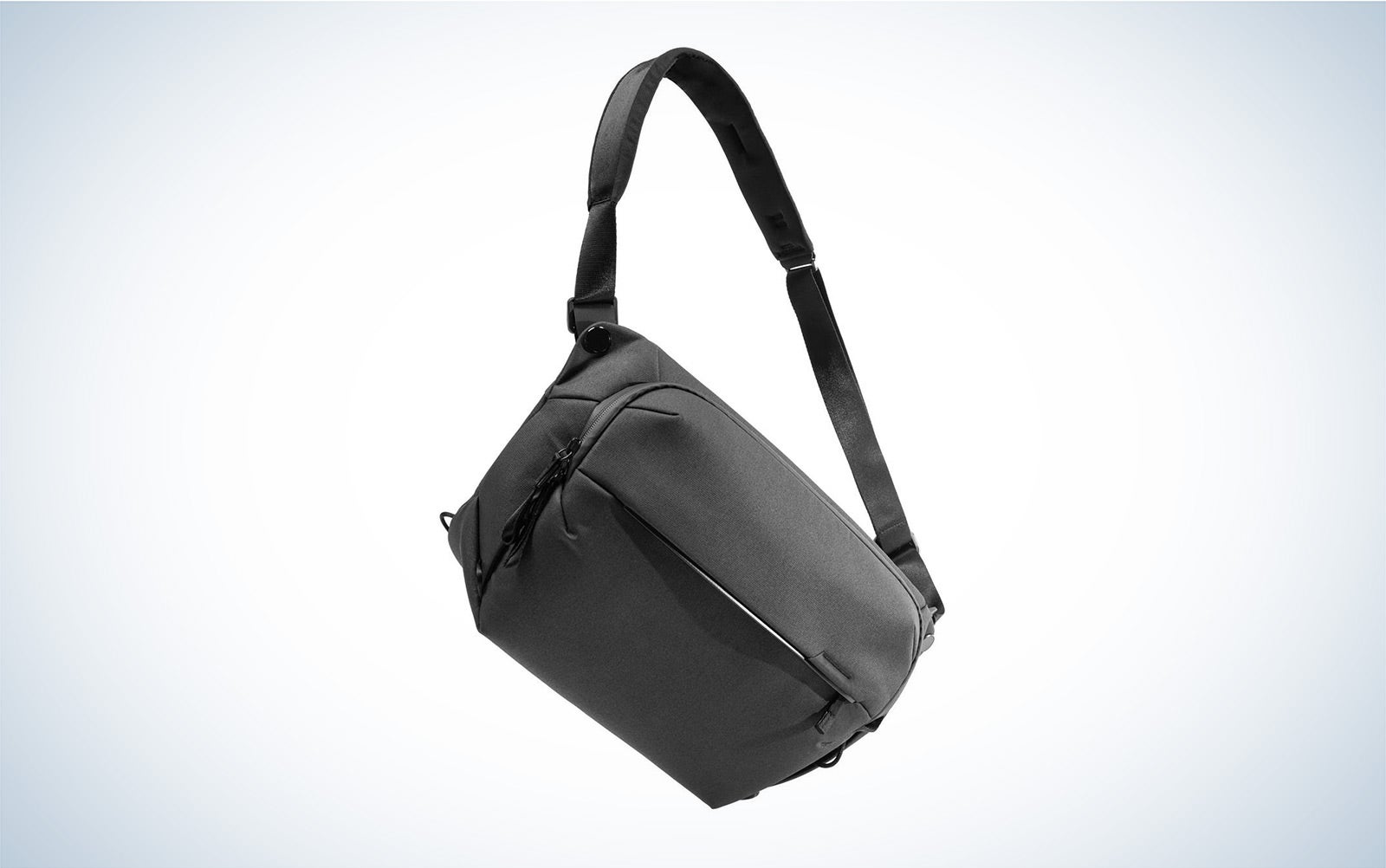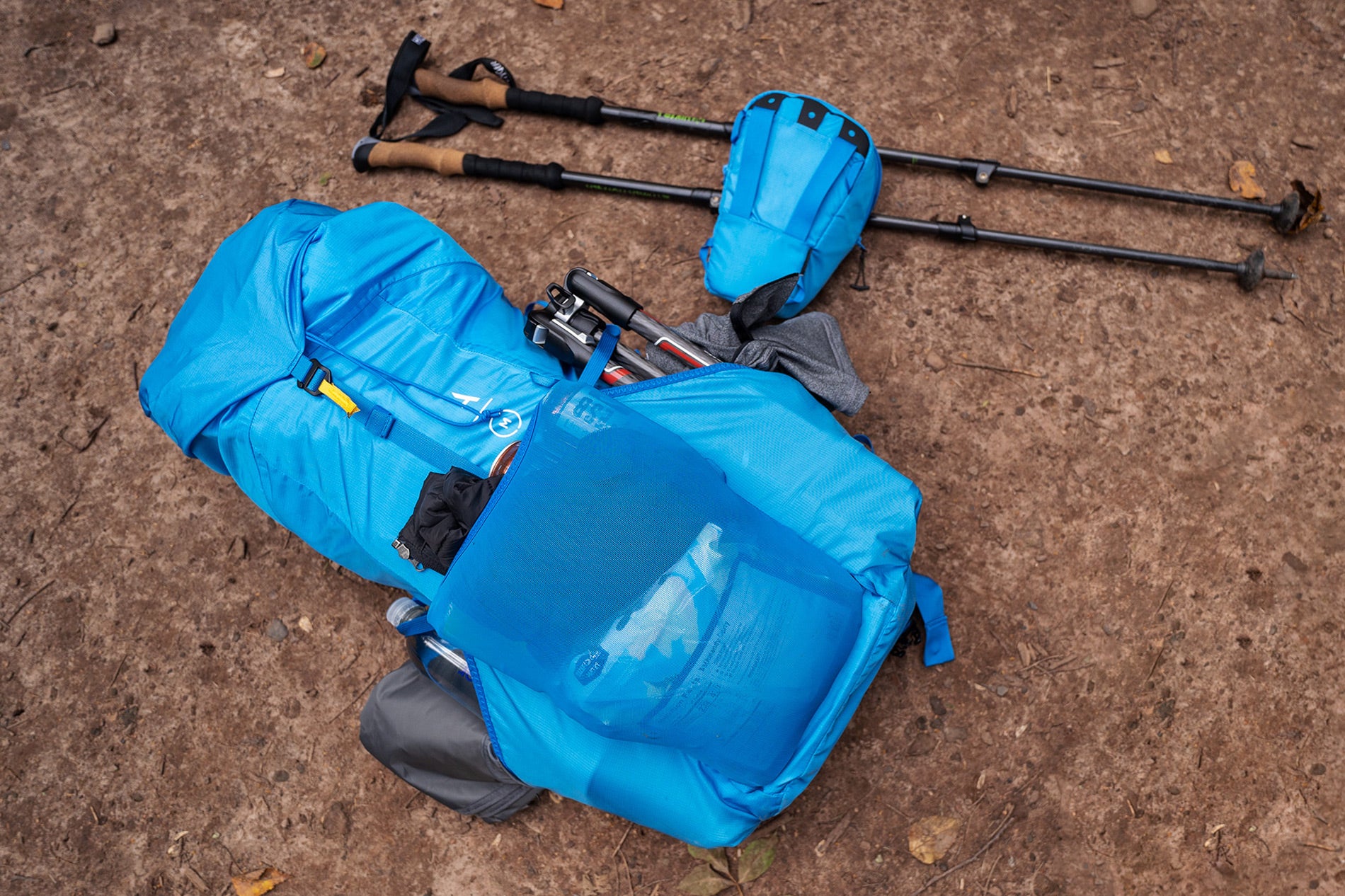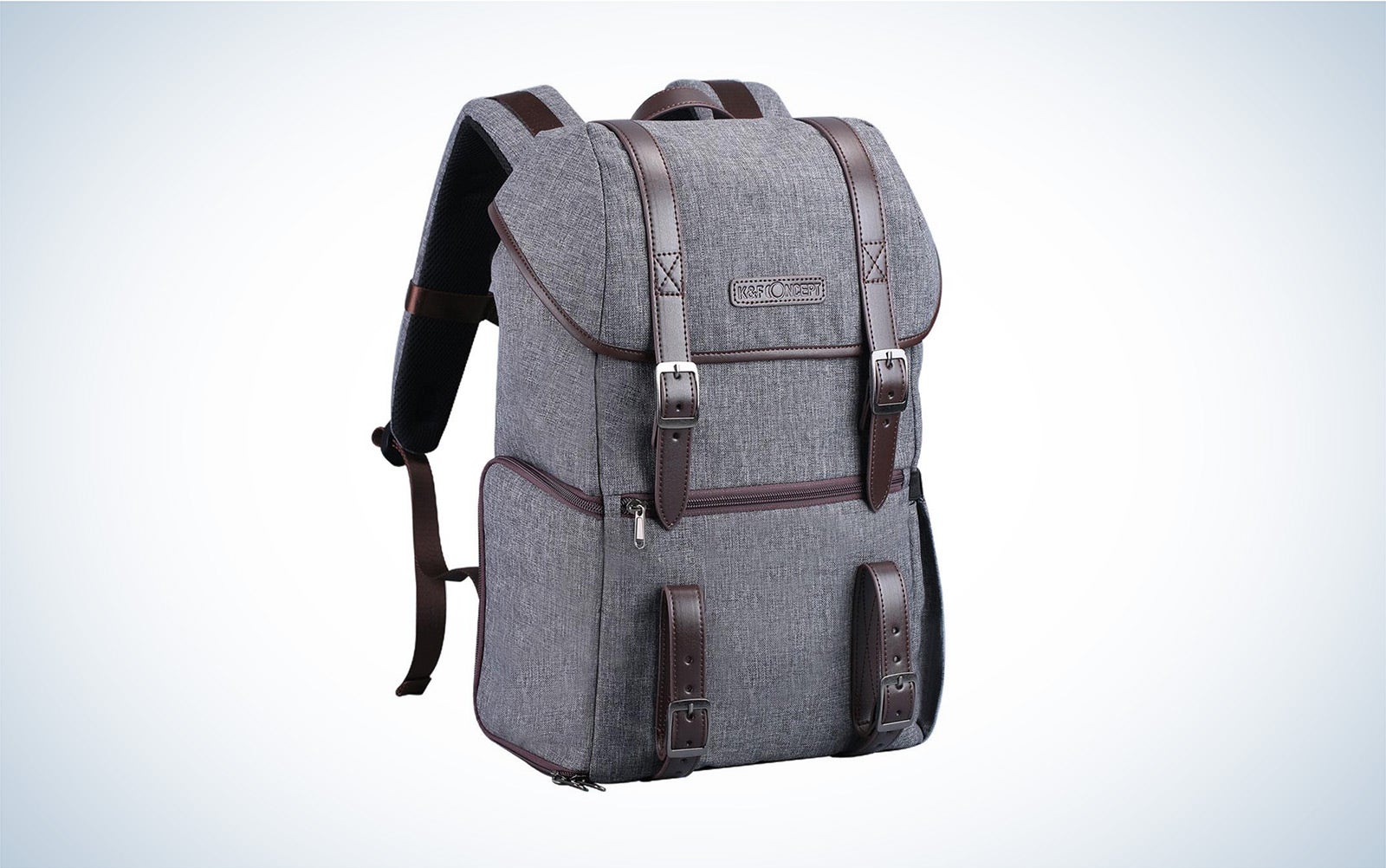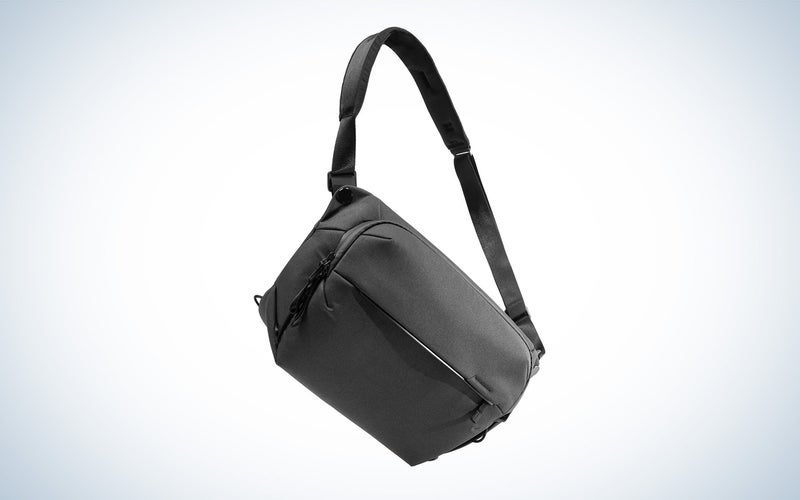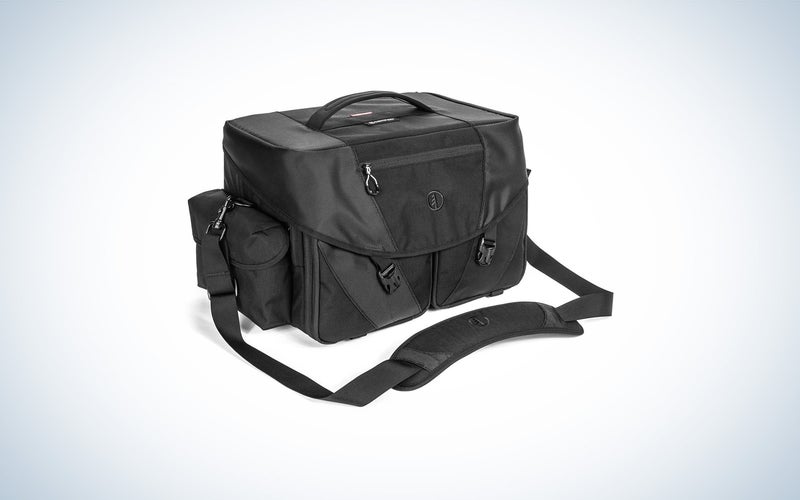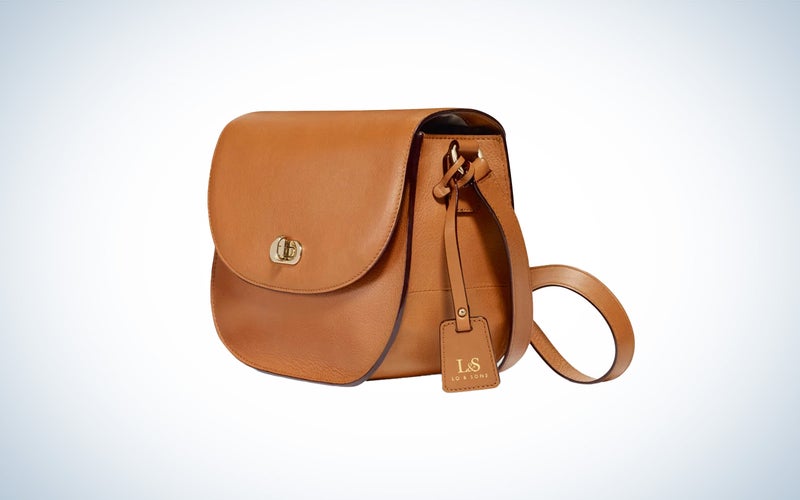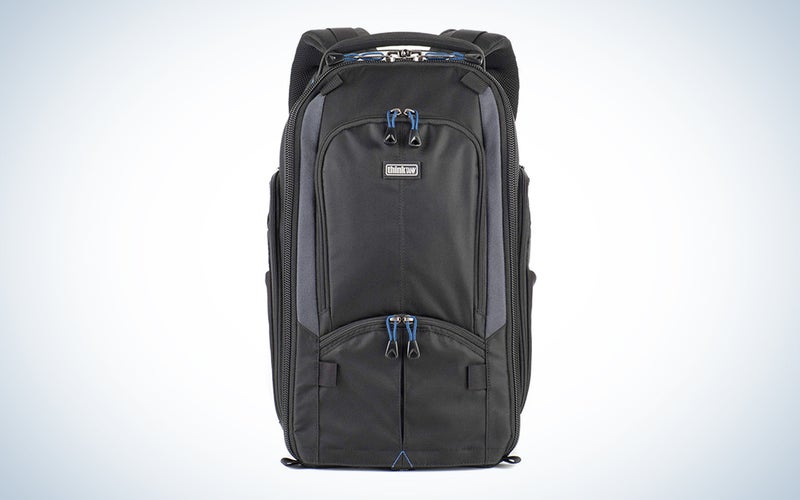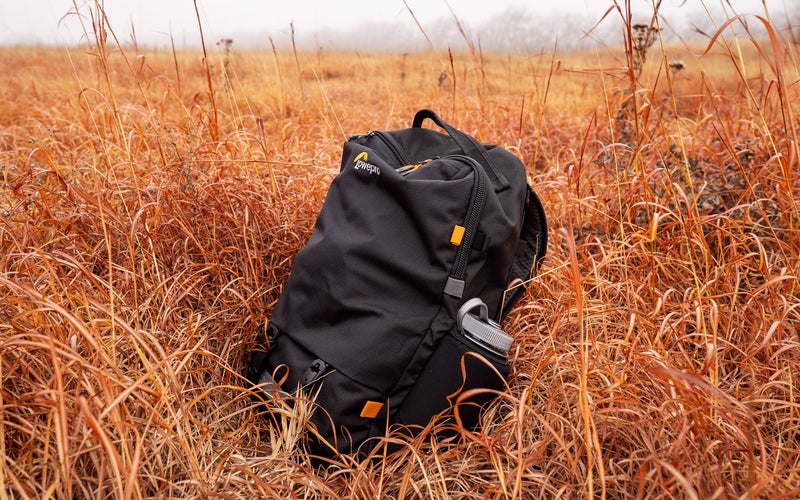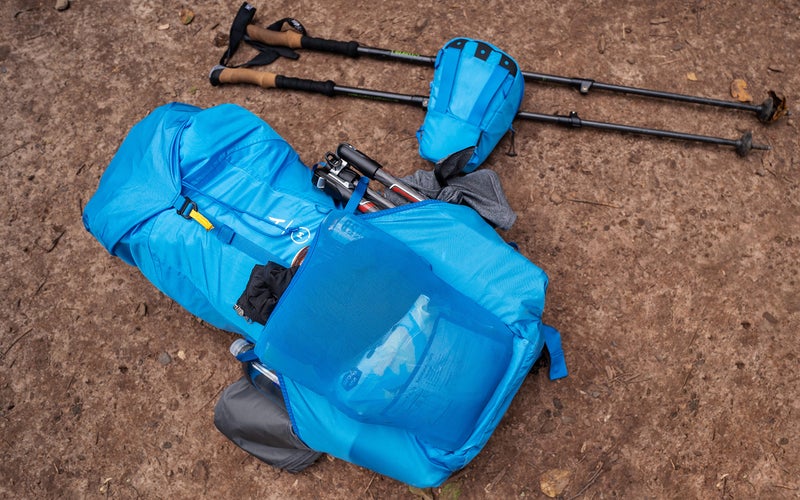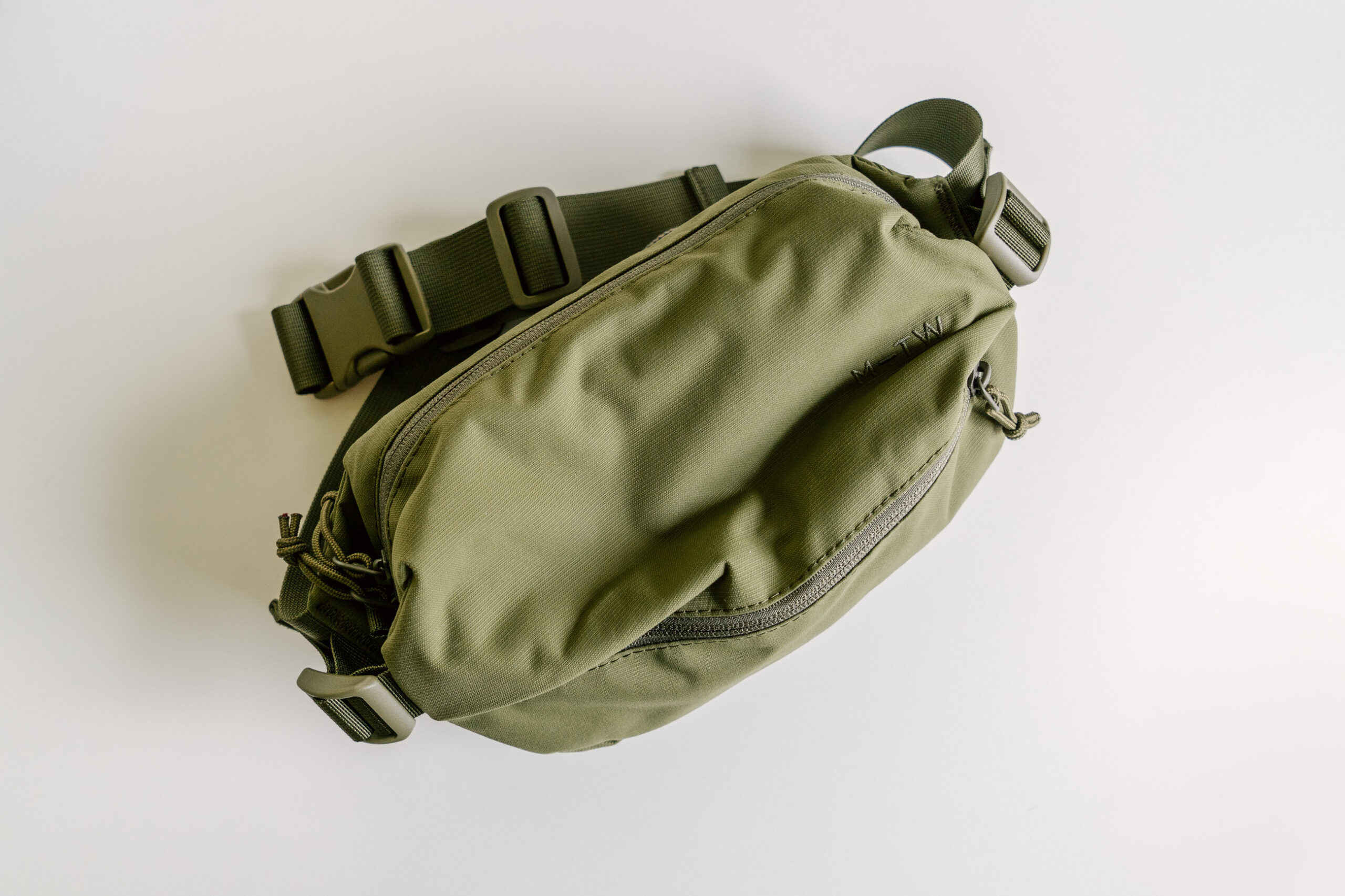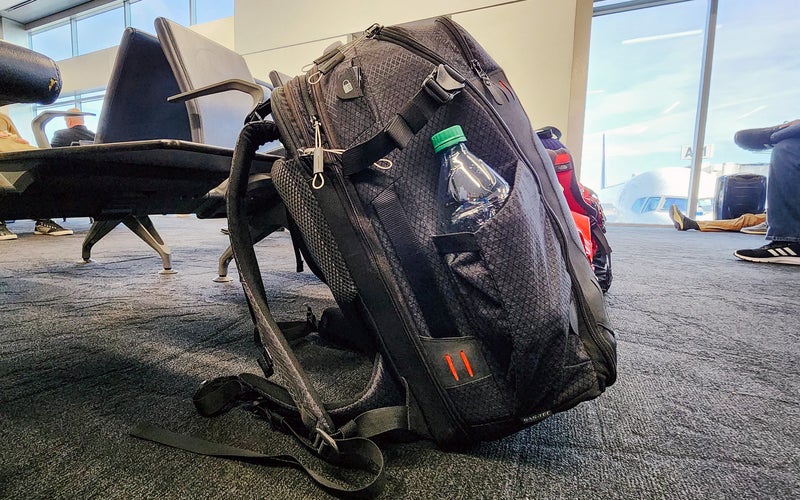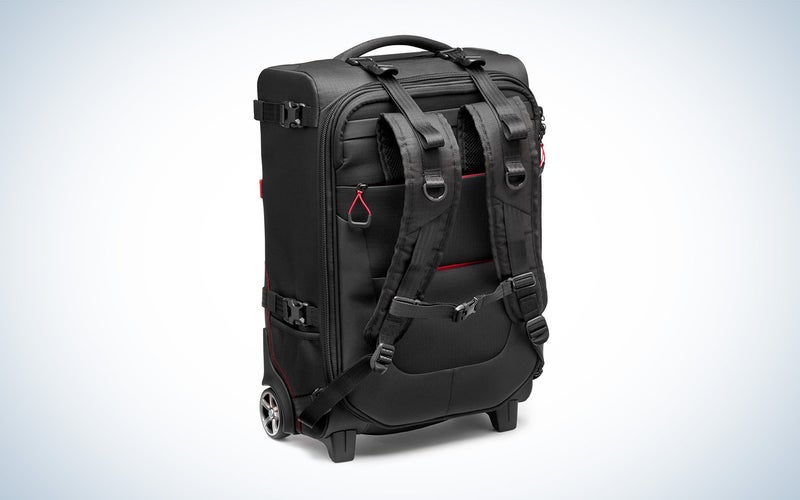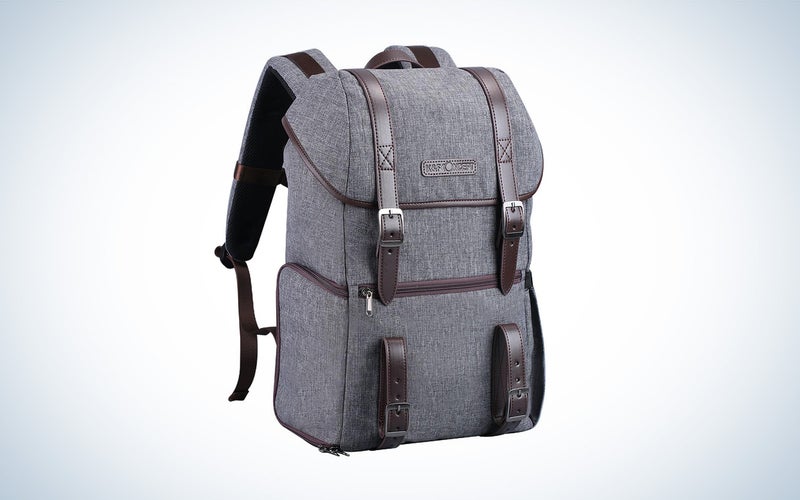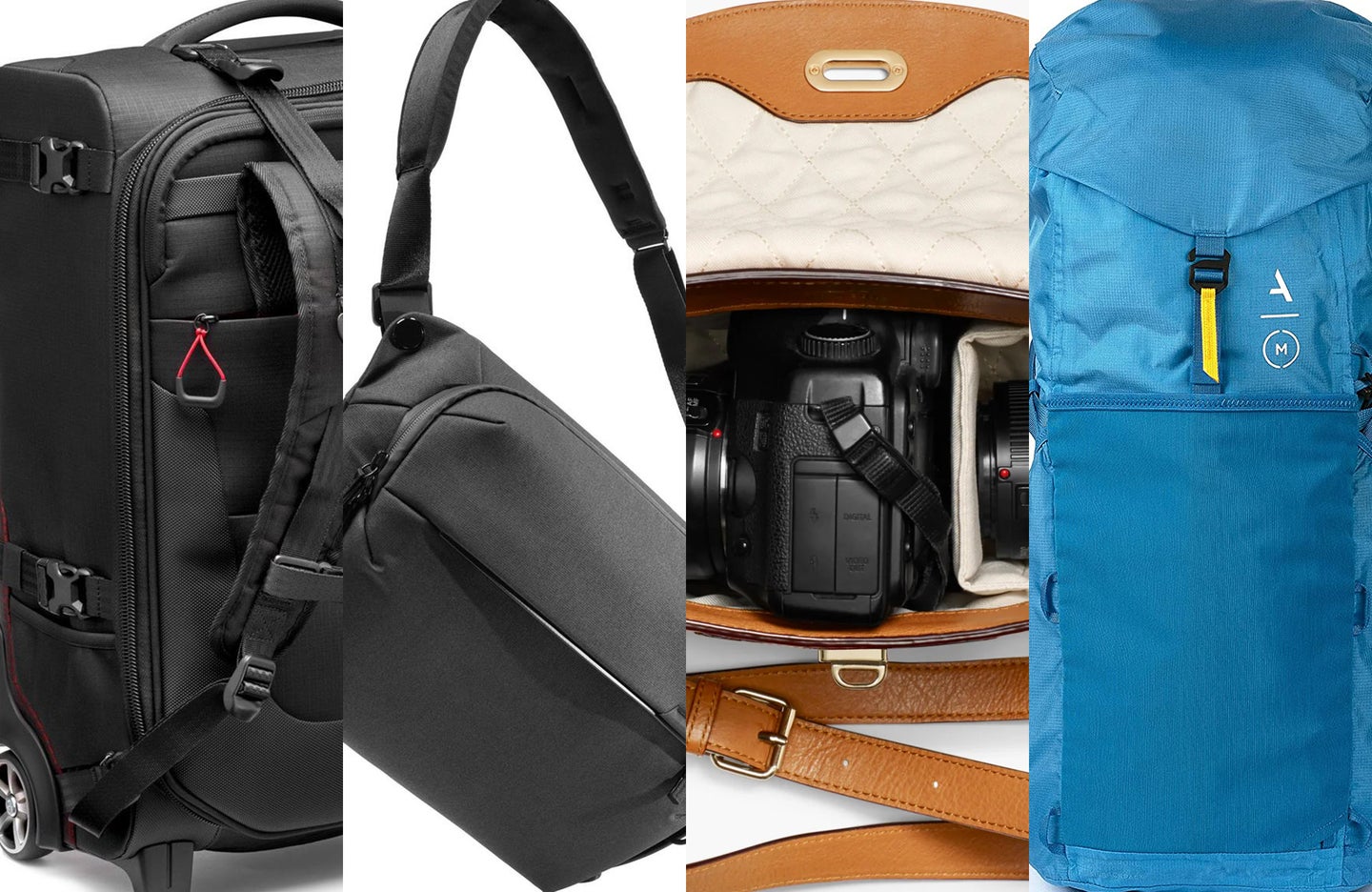
We may earn revenue from the products available on this page and participate in affiliate programs. Learn more ›
Camera bags are essential pieces of equipment for keeping your expensive gear safe. But despite seeming like a simple thing, camera bags can be quite tricky to get right. There is no shortage of options available, coming in many different form factors, sizes, and with a range of specialized features. Unfortunately, the qualities that make for an ideal bag can vary vastly between people and even situations. Most of us end up with a small arsenal of bags ready for any scenario. We’ve found the best camera bags for all sorts of situations and preferences to help you find the ideal bag for you.
- Best sling: Peak Design 10L Everyday Sling V2
- Best shoulder bag: Tamrac Stratus 15
- Best purse: Lo & Sons Claremont Purse
- Best everyday backpack: Think Tank Photo Streetwalker V2.0 Backpack
- Best backpack for short hikes: Lowepro Trekker Lite BP 250 AW, Black
- Best backpack for long hikes: Moment Strohl Mountain Light
- Best small: Moment MTW Fanny Sling 2L
- Best backpack for lots of gear: Manfrotto Pro Light Flexloader Backpack L
- Best rolling camera bag: Manfrotto Pro Light Reloader Switch-55
- Best budget: K&F Concept Large Travel Backpack
How we chose the best camera bags
The writers and editors have worked in the photography industry for decades and have gone through our fair share of camera bags as a result. We based our selections on a mix of personal, hands-on experience as well as editorial and consumer reviews. When choosing the bags included here, we prioritized quality above all, as a bag that won’t last or keep your gear safe isn’t worth it. We then considered size, capacity, comfort, and weatherproofing. Lastly, we looked at any special features that may make a bag stand out or add convenience and functionality.
The best camera bags: Reviews & recommendations
Camera bags come in a vast range of sizes and styles, and unfortunately, it’s not a one bag fits all situation. Different situations call for different bags, and what works well for one person may not work for another. So, we aimed to provide a variety of bags that will fit the needs of many different photographers.
Best sling: Peak Design 10L Everyday Sling V2
Peak Design
Specs
- Bag style: Sling
- Color options: Black or Ash
- Laptop sleeve: Yes, up to 13 inches
- Internal dimensions: 12.4 x 10 x 4.7 inches
- External dimensions: 16.5 x 9.8 x 5.5 inches
- Weight: 1.94 pounds
Pros
- Made with recycled and weatherproof fabric
- Luggage carry pass-through
- Comfortable to carry
- Plenty of pockets for organization
Cons
- Can only be worn as a sling
Peak Design makes some fantastic bags, including its Everyday Sling V2. Despite the rather sleek and minimal design, it can hold quite a bit. There’s a 14-inch laptop sleeve and it can hold a mirrorless body with a lens attached and three to four additional lenses. Or, there’s room for a full-frame DSLSR with a 70-200mm lens, along with extra room for accessories.
This sling bag is made of recycled fabric that is weatherproof to protect your gear should you get caught in the rain. The FlexFold dividers allow you to customize the organization and protection. Using the quick-adjustor, you can loosen the strap to quickly access your gear and then tighten it right back up. And there is anti-slip adjustment hardware to keep the bag comfortably in place even if you are riding your bike or hiking.
This is the second iteration of the company’s popular sling-style bag, and it brings many excellent updates to the table. It features a wider main opening for easier access and even more organizational pockets on the interior and exterior for keeping your gear in place. Peak Design also updated the zippers to add durability, and there’s now a Cord Hook external carry strap system.
Best shoulder bag: Tamrac Stratus 15
Tamrac
Specs
- Bag style: Shoulder bag
- Color options: Black
- Laptop sleeve: None
- Interior dimensions: 15 x 8.25 x 8 inches
- External dimensions: 18.5 x 9 x 10 inches
- Weight: 3.75 pounds
Pros
- Waterproof and durable build
- Can hold multiple camera bodies and extra lenses
- Trolley sleeve makes travel easier
- Lots of pockets for organizing gear
Cons
- Interior plastic pocket doesn’t hold up well
- Bottom isn’t waterproof
The Tamrac Sratus 15 is a bag built for pros or those serious about protecting large quantities of gear. It is ruggedly built to withstand some not-so-gentle use, including hard drops to the ground. It’s a box-shaped bag with a completely flat bottom, making it easier to set down and access what you need instead of trying to balance the bag just right. Unfortunately, the bottom is made of the same fabric as the rest, so you’ll need to avoid puddles or risk water soaking in.
As a shoulder-style bag, it features just a single strap. That strap is well padded, making it more comfortable to carry even when loaded up. And the handle on top makes it easy to grab for times you need to move fast. There are four larger pockets on the outside of the bag, including extra organizational pockets in the front two.
Perhaps most importantly for some, the Stratus 15 can hold a lot of gear. It’s able to hold multiple pro-level bodies with lenses attached while still offering room for additional lenses, flashes, or accessories. The Lens Gate dividers are customizable, so you can set them up in a way that best protects your setup. And there are tripod attachment straps, so you won’t have to carry that separately.
Best purse: Lo & Sons Claremont Purse
Lo & Sons
Specs
- Bag style: Purse
- Color options: Sienna, Black, Deep Navy, Light Grey
- Laptop sleeve: None
- Internal dimensions: 9.5 x 7 x 4.5 inches
- External dimensions: 10.5 x 8.5 x 5.5 inches
- Weight: 1.5 pounds
Pros
- Stylish design
- Two dedicated memory card pockets
- Camera divider can be removed
- Holds larger DSLRs and a spare lens
Cons
- Expensive
There are many times that I want to have my camera on me but don’t want to carry a traditional (and typically not very attractive) camera bag with me. The Lo & Sons Claremont is a fantastic solution. It looks like a stylish purse, but inside is quilted padding with a divider to keep your camera and a spare lens safe. It can hold much in terms of camera gear, but it looks great and doesn’t scream “camera bag.” And the divider can be removed if you want to use it as a purse without your camera.
The Claremont is made of quality full-grain leather and comes in four different colors—black sienna, deep navy, and light grey—so you can pick what goes best with your style. There is a discreet pocket on the back for stashing important essentials like your wallet or passport. The turn-lock metal closure keeps the top flap securely closed, so you don’t have to worry about things falling out. And there are two dedicated SD card slots, so they don’t get lost in the abyss of your bag.
Lo & Sons specifies that the Claremont is compatible with DSLR cameras, including the Canon 5D, 7D, 50D, 60D, T3i / 600D, T3, and XS. They also list the Nikon D90, D700, D3000, D3100, D5000, and D7000. But, as long as your camera is smaller than the 9.5 x 7 x 4.5-inch internal dimensions, you’ll be good to go. And it will fit an additional compact lens as well.
Best everyday backpack: Think Tank Photo Streetwalker V2.0 Backpack
Amazon
Specs
- Bag style: Backpack
- Color options: Black
- Laptop sleeve: Fits up to 10-inch tablets
- Internal dimensions: 16.1 x 9.4 x 6.3 inches
- External dimensions: 17.3 x 9.8 x 7.1 inches
- Weight: 3.3 pounds
Pros
- Holds tons of gear
- Very comfortable
- Zips can be padlocked
- Lots of pockets
Cons
- No laptop sleeve
The Think Tank Photo Streetwalker V2.0 is a utilitarian, durable camera backpack. It offers tons of storage for your camera and photography equipment, even including a 300mm lens. Or it can fit two bodies with lenses attached, plus some extra lenses. There is no room for a laptop, but it does provide a 10-inch tablet sleeve, so you at least have that.
Beyond your large equipment, you’ll find loads of pockets for storing all your smaller items. There are pockets on the sides for water bottles, and stretch pockets on the shoulder straps are perfect for sunglasses or snacks. A hidden tripod attachment point on the bottom of the bag and included strap allow you to easily carry your tripod. And there’s even an ID card holder on the top of the bag in case you happen to lose it.
One area that the Think Tank Photo Streetwalker especially shines is comfort. The padded wide straps and slim design make this a good choice for long days of urban shoots. The back is specially padded with breathable air mesh and cooling air channels for ventilation, keeping you cooler than other bags. The bag offers a chest connector and removable waist belt for added security and comfort when walking around. Think Tank utilized water-repellant coatings, but it also comes with a rain cover for more protection.
Best backpack for short hikes: Lowepro Trekker Lite BP 250 AW, Black
Abby Ferguson
Specs
- Bag style: Backpack
- Color options: Black or gray
- Laptop sleeve: Yes, up to 15 inches
- Internal dimensions: 11 x 5.1 x 18.9 inches
- External dimensions: 11.4 x 7.3 x 19.3 inches
- Weight: 2.2 pounds
Pros
- Very lightweight
- Provides room for non-photography items
- Comfortable to wear
- Can carry a laptop
Cons
- Camera compartment isn’t easy to access
Most camera bags are relatively large and clunky, making them less than ideal to take on short hikes or quick day trips. The Lowepro Trekker Lite changes that. It is very compact and lightweight, making it ideal for short adventures. The soft structure and removable camera insert make it versatile and packable, so you can even bring it with you on longer trips to use for daily outings. And it’s comfortable to wear, even if your short hike turns into a long one.
Despite the small size, the Trekker Lite features a dedicated laptop sleeve that holds up to a 15-inch laptop that is quickly accessible for airport security lines. The top half of the bag is open for storage, making it easy to bring along a jacket, snacks, or other travel necessities. A smaller pocket on the exterior provides a key clip so your keys don’t get lost. And the side stretch pocket allows you to bring a water bottle along.
The Trekker Lite BP 250 utilizes a removable GearUp camera insert for camera storage. You’ll also get a strap so that you can use the camera insert on its own if you would like. It doesn’t hold very much gear, but that’s a plus for many situations. The camera insert fits my Sony a7 III with a 24-70mm attached and my Sigma 14-24mm perfectly, which is ideal for short outings. My one complaint is that it is a pain to get access to the spare lens once it’s in the pack since the camera insert only offers access on one side. But it is safe and secure in there.
Best backpack for long hikes: Moment Strohl Mountain Light
Abby Ferguson
Specs
- Bag style: Backpack
- Color options: Black or blue
- Laptop sleeve: None
- Internal dimensions: Not provided
- External dimensions: 31.5 x 10.5 inches
- Weight: 2.6 pounds
Pros
- Comes in two torso lengths
- Extremely lightweight
- Durable and waterproof
- Holds a lot of backpacking gear
Cons
- Camera compartment could be more protective
- Brain compartment comes off too easily
If you’re going on longer day hikes or even short backpacking trips, you’ll need to bring a good amount of gear. In those situations, every bit of weight matters. The Strohl Mountain Light 45L is ideal for those longer trips because it is incredibly lightweight. You won’t be carrying all the extra weight of just the pack itself, which is crucial in some situations. And it’s available in two different torso lengths—17-18.5 inches and 18 inches or taller—which is a unique feature that results in a more comfortable fit.
Despite the large capacity, the pack weighs just 2.6 pounds when empty. Due to the stuff sack design, it is able to expand when needed. Or it easily compresses down for when you don’t need the room. Though it was tight, I was able to bring a weekend’s worth of backpacking gear with me. You don’t get any interior organization, which isn’t for everyone, but it does make it easy to simply jam all your things inside and move on. And you get some helpful organization from the removable brain and all the stretch pockets on the bag’s exterior.
The Mountain Light is made from durable waterproof material to keep your gear dry even in rainy conditions. And it’s compatible with a hydration bladder, allowing you to bring more water along. The camera compartment could be more refined and protective, but it is removable for when you don’t want your camera along. The pack is comfortable even when fully loaded, thanks to well-designed padding in all the right places.
Best small: Moment MTW Fanny Sling 2L
Abby Ferguson
Specs
- Bag style: Fanny pack/sling
- Color options: Olive, Black, Black Ripstop, Clay, or Mustard Yellow
- Laptop sleeve: None
- Internal dimensions: Not provided
- External dimensions: 8.5 x 5.5 x 3.5 inches
- Weight: 10 ounces
Pros
- Lots of pockets
- Very small and easy to carry
- Holds a surprising amount
- Comes in five colors
Cons
- Strap isn’t very easy to adjust
For those times when you really want a minimal kit with you, the Moment MTW Fanny Slong 2L is hard to beat. It fits compact cameras such as the Ricoh GR III, or even a Nikon Z50 or Fujifilm X-T5 with a prime lens attached. The inside is made with a soft fabric to keep your gear safe. And it even comes with a microfiber cloth tethered to the bag to keep your lenses clean.
There are seven different adjustment points on this bag, resulting in a very customizable design. That includes straps on the bottom that allow it to expand up to four inches, which Moment says will allow you to fit a windbreaker. Or, cinch them down when you don’t need to store as much. There are pockets and compartments galore to keep your things organized, including a passport pocket and a microfiber-lined pocket for sunglasses or lens filters.
The Fanny Sling is made of recycled materials and features a double waterproof coating. And the reverse coil zippers keep water out as well. It’s comfortable to wear and can be worn on either the shoulder or the hips in classic fanny pack style. And it comes in five different colors, so you can pick one that fits your style best.
Best backpack for lots of gear: Manfrotto Pro Light Flexloader Backpack L
Abby Ferguson
Specs
- Bag style: Backpack
- Color options: Black
- Laptop sleeve: Yes, up to 15 inches
- Internal dimensions: 10.2 x 5.9 x 18.5 inches
- External dimensions: 14.2 x 13.8 x 22 inches
- Weight: 6.58 pounds
Pros
- Holds a lot of gear
- Lots of external attachment points
- Torso height is adjustable
- Durable and protective
Cons
- Very bulky
- Pricey
The Manfrotto Pro Light Flexloader L is a great option for those shoots that you need to bring your entire kit. The front access camera compartment features a movable divider system, so you can change it up based on what you are bringing. It can hold two camera bodies and multiple lenses or one body and some bigger lenses. And the front panel unzips all the way, making it easy to access things even at the very bottom of the bag.
Beyond the main camera compartment, you’ll find a dedicated laptop sleeve that holds up to a 15-inch computer. There’s also an expandable pocket that Manfrotto designed for gimbals. You get a water bottle pocket on each side of the bag and lots of attachment points and straps to attach tripods, light stands, or whatever else you may need.
One feature that I love about the Pro Light Flexloader is the customizable torso length. There are three different options to choose from, and they make a surprising difference in how the bag feels. The hip belt, straps, and back are all very well padded (especially the back), so it’s comfortable to wear even for a long day of travel. That’s a bonus since it is not a lightweight bag, even when empty. And the pack also comes with a tethered TSA-approved lock and wire zipper pulls to keep your expensive gear secure when traveling.
Best rolling camera bag: Manfrotto Pro Light Reloader Switch-55
Manfrotto
Specs
- Bag style: Backpack/roller bag
- Color options: Black
- Laptop sleeve: Yes, up to 17 inches
- Internal dimensions: 18.5 x 12.6 x 7.09 inches
- External dimensions: 21.65 x 13.98 x 9.06 inches
- Weight: 8.2 pounds
Pros
- Holds a ton of gear
- Can be used as a roller bag or backpack
- Zipper padlock is built-in
- Made of durable and weather-resistant materials
Cons
- Expensive
As another member of the Manfrotto Pro Light family, this rolling camera bag offers remarkable versatility for traveling photographers. The rolling wheels and adjustable handle make transport easy, so you can breeze through airports. Or, when you don’t want to roll it, there are also backpack straps that tuck away for versatile carrying options.
The Reloader Switch-55 is a large bag, able to hold a pro DSLR with a 400mm attached along with another body and three to four extra lenses. You’ll have no issues fitting your extensive kit if you are a mirrorless shooter. There’s also a pocket on the side to attach a tripod and a laptop sleeve on the front of the bag. Though Manfrotto specifies it can hold up to a 17-in laptop, the pocket is quite narrow, so it won’t be able to hold thick laptops very well.
Despite all that it can hold, the roller bag fits international carry-on sizes. Always double-check with your airline, of course, but you should have no issues bringing it on the plane with you. The Reloader Switch-55 features a built-in TSA-approved zipper padlock to keep your gear secure. And there are straps on the inside of the bag that keep the lid from opening all the way, which is handy when opening it up in crowded airports.
Best budget: K&F Concept Large Travel Backpack
K&F Concept
Specs
- Bag style: Backpack
- Color options: Gray
- Laptop sleeve: Yes, up to 14 inches
- Internal dimensions: Not provided
- External dimensions: 11.81 x 6.69 x 18.9 inches
- Weight: 2.01 pounds
Pros
- Quick side access
- Very affordable
- Attractive styling
- Provides room for daily essentials
Cons
- Doesn’t hold much camera gear
Camera bags are typically quite expensive, but this K&F Concept bag comes at a much more affordable price while still providing lots of excellent features. For starters, it features attractive and discreet styling. It looks like a generic backpack, not one that may be carrying a camera worth a few thousand dollars.
This backpack-style camera bag offers side camera compartment access, which means you don’t have to take it all the way off to get your camera out. The straps on the front allow you to attach a tripod, though you will want to stick with one that is pretty short when folded up. There’s a water bottle pocket on the side, and the top of the pack can hold extra clothes or other gear that you may need.
The back of the pack and straps are nicely padded, making it comfortable to wear. There isn’t a waist belt, but a chest strap helps keep things secure. And the camera insert can be fully removed if you want to use the backpack without your camera, adding versatility. It may not offer quite as much protection or special features as more expensive bags, but for around $50, it’s hard to beat.
Things to consider before buying the best camera bag
The market is incredibly flooded with camera bags, now more than ever. A number of popular photography influencers have teamed up with bag companies to release unique and specialized designs, and smaller camera bag companies have cropped up like crazy to expand available offerings even more.
With all of the options of brands, styles, and sizes, it can be incredibly difficult to choose what will be best. And, since most bags are priced fairly high, you don’t want to purchase something only to discover that it doesn’t work very well. But, by carefully considering the items below, you can hone in on what will best suit your needs and wants.
How much camera equipment do you need to carry?
One of the first things to consider when shopping for camera bags is how much you need to store in it. If all you need to carry is a small camera with a few lenses, a large bag with lots of storage may be overkill. On the other hand, if you’re a commercial or wedding photographer shooting on location, you will likely need to have a small arsenal of gear to choose from, requiring a larger bag.
Do you need room for non-photography gear?
Beyond photography equipment, you’ll also want to think about the other items you may need with you. For a casual afternoon of photographing close to home, a bag that only holds camera gear may be perfect. But, if you’re traveling for a shoot, you’ll likely want a protective place to put your laptop. You may even want room for extra clothes, though maybe could get away with shoving items in the nooks and crannies between lenses in order to avoid a gigantic bag.
For activities like long hikes or backpacking trips, you’ll need room for plenty of extra gear and the ability to carry lots of water. You’ll also need to decide if you’re okay with water bottles or would prefer to be able to carry a hydration bladder. Whether a bag provides attachment points for things like hiking poles is also something you may want to pay attention to.
Camera bag size
While bag size is largely determined by storage capacity, some camera bags are bulkier and heavier than others. If you like to travel light, be sure to look closely at the dimensions and weight of a bag. I’ve had to deal with too many bags that are heavy when completely empty and weigh a ton when loaded up; it’s not a fun endeavor. And dealing with a bulky bag in crowded airports is not ideal either.
The downside to lightweight bags is that they typically offer less protection for your expensive equipment. Padding and structural elements, unfortunately, add quite a bit of weight. So, if you’re priority is keeping your camera and lenses safe, then you may need to deal with a heavier pack.
Camera bag style
Camera bags can take the form of backpacks, slings, shoulder bags, fanny packs, purses, or even roller bags. Which is right for you depends on how much gear you need to carry and personal preference. For those who need to carry around substantial kits, a large backpack or roller bag will be necessary. But, if you want a more discreet and simple method of carrying a small camera, slings, fanny packs, and purses will suffice.
Keep in mind that some bag styles are more comfortable to carry than others. For example, a heavy should bag isn’t ideal for lugging around on a hike or a long day in an airport. Always think about where you will primarily be using the bag and what type of style may be most comfortable for you.
Fit & comfort
How big and heavy your camera bag is absolutely plays a role in comfort, but there are other factors to pay attention to as well. One that is easy to forget is the torso length of a pack. I made the mistake of not paying attention to this and ended up with a bag that was much too long for my body, making it extremely uncomfortable to wear and resulting in a waist belt that didn’t function as it should.
While most bags only offer one size, some bag manufacturers have started to offer multiple torso sizes or bags that offer adjustable torso lengths. This is fantastic to see and means that comfortable and well-fitting bags will be available for even more people.
The more obvious sign of comfort is the padding on the back and straps. For casual use, you don’t need something with lots of padding. But if you will be wearing the bag for a long time or are dealing with a heavy bag, you will thank yourself later for investing in a bag with lots of padding in those key areas. For heavy packs, a well-padded and well-fitting waist belt is also crucial, as it can take a substantial amount of weight off your shoulders.
Weatherproofing
For most photographers, some level of weatherproofing or water resistance is important. For those who are only going to and from a studio or office, you may be able to get away with a bag that doesn’t offer much protection. But if you will be outside with your camera bags for any extended period of time, you’ll either want a bag that is fully waterproof or one that at least comes with a rain cover specifically fit for that bag.
Access type
One of the last pieces of the camera bag puzzle is how you will access your camera. Camera bags, particularly backpacks, typically offer three types of access: Front, side, or back. Back access is the most secure, as others won’t be able to access it while you are wearing it. And if you accidentally leave it unzipped, your gear won’t come spilling out when you put it on. But with front and back access, you’ll need to take the bag all the way off to get to your gear, which may not be ideal in some situations.
If you want fast access to your camera equipment, side entry or a camera sling are the way to go. That way, you can simply take off one strap, rotate the bag around, and grab your camera with less fuss. Side access usually only allows you space for the camera itself and not the rest of your gear, however, so there is a downside if you like to change lenses frequently.
FAQs
Q: Do you really need a camera bag?
A camera bag is a good investment because it is designed to protect cameras, lenses, and other equipment. Camera bags can protect your expensive gear from falls, rain, sand, and so much more. And a bag can also make it more comfortable to have your camera on you.
Q: What should I look for in a camera backpack?
When shopping for a camera bag, you should make sure the carrying capacity is just right, big enough for your shooting necessities such as a camera, lenses, battery packs, and phone, but not so big that it becomes overly heavy and cumbersome. Other smart features to look for are waterproof materials, protective padding, and specialized pockets for lenses or other gear.
Q: How do you transport camera lenses?
The best way to transport camera lenses is in a camera bag with padded dividers that fit snuggly around the lens to keep it from jostling about. If you aren’t using a camera bag, we highly suggested a protective wrap to keep it safe. And if you are really particular, you can keep your lenses wrapped in microfiber to keep dust away.
Q: How much does a camera bag cost?
The price of camera bags varies wildly, though most fall between $100 and $200, depending on size and features. Larger bags and those with extreme protection for your camera will cost more, with some even priced close to $500. Smaller bags or those that aren’t as protective will be more affordable.
Final thoughts on the best camera bag
- Best sling: Peak Design 10L Everyday Sling V2
- Best shoulder bag: Tamrac Stratus 15
- Best purse: Lo & Sons Claremont Purse
- Best everyday backpack: Think Tank Photo Streetwalker V2.0 Backpack
- Best backpack for short hikes: Lowepro Trekker Lite BP 250 AW, Black
- Best backpack for long hikes: Moment Strohl Mountain Light
- Best small: Moment MTW Fanny Sling 2L
- Best backpack for lots of gear: Manfrotto Pro Light Flexloader Backpack L
- Best rolling camera bag: Manfrotto Pro Light Reloader Switch-55
- Best budget: K&F Concept Large Travel Backpack
Unfortunately, there is no one camera bag that is the best for every situation and every person. In fact, most of us photographers end up with multiple bags to serve different purposes. But no matter where you take them, the best camera bags will protect your gear while making it easier and more comfortable to carry.
Why trust us
PopPhoto has a long history of delivering the opinions of some of the sharpest and most prolific camera dorks the world has to offer. Since 1937, we’ve been reviewing cameras, providing wisdom from well-known photographers, and generally just nerding out about all that goes into making great pictures. Our current crop of writers and editors have decades of professional photography and camera writing experience among them. Collectively, we’ve probably shot with just about every camera and lens combo you can imagine—as well as some obscure stuff you may not even know about. Remember the Casio Tryx folding camera? PopPhoto does.
We also get that buying a camera is a big decision, which is why we’re dedicated to helping folks choose the right one (or, in our case “ones”) for their needs. Case in point: Handing over top dollar for an expensive rig may leave you unsatisfied if it doesn’t fit your preferred shooting style. Sure, a $6,000 sports-oriented DSLR can capture landscapes, but do you really need to do it at 30 frames-per-second? No, you don’t.
The post The best camera bags of 2023 appeared first on Popular Photography.
Articles may contain affiliate links which enable us to share in the revenue of any purchases made.
